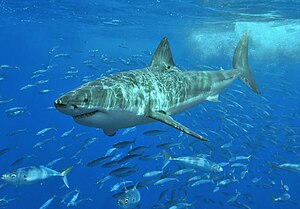We tackle some big questions on the blog today:
Is aquaculture responsible for rapid rises in sea-levels?
The answer is yes according to finding in a study published in Geophysical Research Letters.
Researchers found that parts of the Yellow River delta in China
are falling by up to 25 cm a year, probably because of
groundwater extraction for onshore fish tanks. This figure is 100 times greater than the global average.
The
science journal, Nature reports that these findings come as something
of a surprise to the aquaculture community. “This is not yet on the
industry’s radar, but
it should be,” says Stephanie Higgins, a PhD geology student at the
University of Colorado
Boulder who led the study.
Is integration the future of aquaculture?
With
profit margins getting tighter, should fish farms expand into feed
production and processing? Or is it just asking for trouble?
This article looks at Cooke Aquaculture's experiments with integration in Canada.
The firm bought a feed mill five years ago as foray into integration.
Today,
the Truro feed mill produces 320 tonnes of salmon feed a week for the
Digby farm, says Chuck Brown, communications manager, Cooke Aquaculture.
The
mill uses fish byproducts from wild fish industries in its feed and the
company has reduced its reliance on fish ingredients by 70 percent over
the last ten years.
It seems the feed mill has been a success and, given that the company plans to open a processing plant in Shelburne in 2015, the experiment with integration look set to continue.
Can shark-resistant netting help ensure responsible aquaculture?
One of the limitations of warm-water aquaculture is sharks. These creatures can chomp through traditional nets and cages with ease, making the fish inside a tasty a meal.
To tackle this problem, DSM Dyneema, NET systems Inc and the Cape Eleuthera Institute have joined forces to create shark-resistant nets called Predator-X.
Made of Dyneema polyethylene fibres and stainless steel wire, the Predator-X nets have a high breaking point and and cut resistant.
In trials, the net managed to withstand bites from tiger sharks, hammerheads, black tip, reef, lemon and nurse sharks, as well as bull sharks.
In an interview with National Geographic magazine, Ken Robertson, application development technical service engineer, DSM Dyneema, spoke about the specifics of the nets and
aquaculture in general.
Watch a video about the Predator-X:
| English: Great white shark at Isla Guadalupe, Mexico, August 2006. Shot with Nikon D70s in Ikelite housing, in natural light. Animal estimated at 11-12 feet (3.3 to 3.6 m) in length, age unknown. Français : Photographie d'un Grand requin blanc (Carcharodon carcharias) de 3,5 mètres environ, prise à l'île Gadalupe en août 2006. Matériel : Nikon D70s dans un caisson étanche Ikelite. (Photo credit: Wikipedia) |



No comments:
Post a Comment